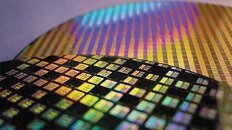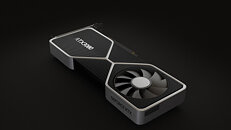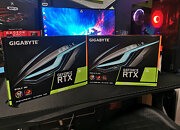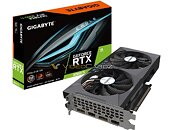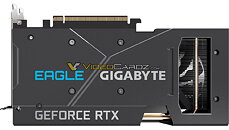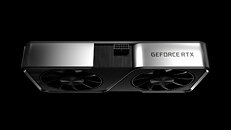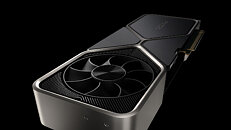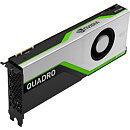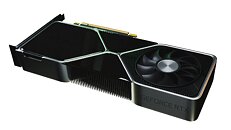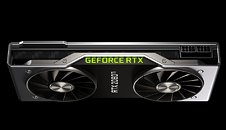
NVIDIA Announces GeForce RTX 3050 Ti Mobile and RTX 3050 Mobile
Alongside Intel's launch of the 11th Gen Core "Tiger Lake-H" desktop processor series, NVIDIA debuted its mid-range GeForce RTX 3050 Ti (mobile) and RTX 3050 (mobile) graphics processors. Both chips are designed with typical 3D power ranging between 35 W and 80 W. Both chips are based on the new 8 nm "GA107" silicon. This "Ampere" chip physically packs 2,560 CUDA cores across 20 streaming multiprocessors, with 80 tensor cores, 20 RT cores, and a 128-bit wide GDDR6 memory interface.
The GeForce RTX 3050 Ti (mobile) appears to be maxing out the GA107 silicon, featuring all 2,560 CUDA cores, 80 tensor cores, 20 RT cores, and 4 GB of GDDR6 memory across the chip's 128-bit wide memory bus. The RTX 3050 is slightly cut down, with 16 out of 20 SM enabled. This works out to 2,048 CUDA cores, 64 tensor cores, and 16 RT cores. The memory remains the same—4 GB GDDR6. Clock speeds will vary wildly depending on the notebook model, but typically, the RTX 3050 Ti can boost up to 1695 MHz, while the RTX 3050 can boost up to 1740 MHz. Both chips take advantage of PCI-Express 4.0 and Resizable BAR. The company didn't reveal memory clocks.
The GeForce RTX 3050 Ti (mobile) appears to be maxing out the GA107 silicon, featuring all 2,560 CUDA cores, 80 tensor cores, 20 RT cores, and 4 GB of GDDR6 memory across the chip's 128-bit wide memory bus. The RTX 3050 is slightly cut down, with 16 out of 20 SM enabled. This works out to 2,048 CUDA cores, 64 tensor cores, and 16 RT cores. The memory remains the same—4 GB GDDR6. Clock speeds will vary wildly depending on the notebook model, but typically, the RTX 3050 Ti can boost up to 1695 MHz, while the RTX 3050 can boost up to 1740 MHz. Both chips take advantage of PCI-Express 4.0 and Resizable BAR. The company didn't reveal memory clocks.



